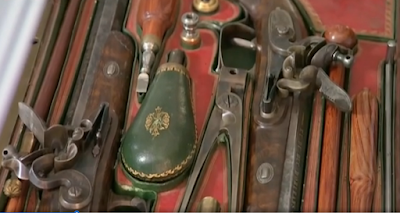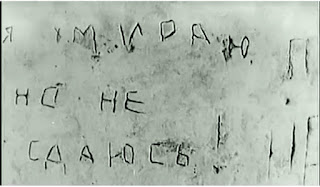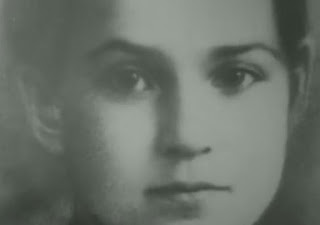Fatal shot
On February 8, 1837 or exactly 180 years ago, the fatal shot was fired; it deprived Russia of its greatest poet. Alexander Sergeyevich Pushkin was deadly wounded in the duel. Hundreds of writings have been compiled about this tragedy, but to these days, the researchers discover more and more new details, often controversial and mysterious ones regarding Pushkin’s death.
It was -15C (5F), moderately windy and snowy at the site of the duel on the bank of Chornaya Rechka (Russian translation of the name of this St. Petersburg river is Black River).
 |
| Pushkin duel |
Pushkin’s firearm and details of the duel
Pushkin’s pistol had been lost. However, there are similar firearms produced by Le Page manufacturer in the Museum of Artillery. The lead bullet is more than one centimeter in diameter, the weight is almost 18 grams, and the barrel is rifled. During its flight the bullet spun and knocked the man down even by a simple touch.
The opponents had to move forward towards each other to the distance of ten steps and then stop and they had to start moving forward from the distance of twenty steps. They could fire immediately. Pushkin fought duels four times and never fired first. Apparently, d'Anthès knew about this Pushkin’s duel trait.
Georges-Charles de Heeckeren d'Anthès was a French military officer who lived in Russia in 1830s.
It is said that d'Anthès was extremely self-possessed and that he outfoxed Pushkin. He fired a shot when they were only one-step away from the barriers.
 |
| Pistol |
Autopsy report – there was none
In those days, nobody made autopsy reports. More likely, the bullet entered the left side of Pushkin’s body, fractured the hipbone and stuck in the sacrum.
D’Anthès most probably aimed for the leg, just so he could be finished with this fight as soon as possible and without any fatal consequences.
The pistol slightly jumped on firing. Moreover, if the bullet entered the stomach, it meant that d'Anthès aimed the lower region, for example, the hip. This is almost a sensation – it looks like the Frenchman did not want the poet’s death! After the shot, Pushkin fell down and allegedly dropped the pistol in the snow; the second gave him another one. However, the duel experts do not accept this universally acknowledged version.
In those times, there was an unwritten rule: if the opponent was wounded or dropped the firearm, the fight could be stopped.
Nevertheless, the duel continued and Pushkin fired in return. D'Anthès fell down. The deadly force of LePage – it would be revealed later that the bullet bounced off the button of the uniform. D'Anthès walked away. Pushkin was dragged towards the carriage.
 |
| Pistols |
After the duel
One of the seconds, attaché of the French Embassy d’Archiac, he was a shirker and could not drag heavy objects. Another second Danzas – his right hand was bandaged, that meant that he could drag only with his left hand. Therefore, they dragged the victim with the damages sacrum several meters in the snow!
At last, the coachman was called and he figured out to make a sleigh taking down a fence. It was approximately seven versts (versta is a Russian unit of length which equals to 0.66 miles) from Chornaya Rechka to the apartment on the Moyka. The trip took an hour and a half. According to the temporary medical professionals, Pushkin lost almost half of his blood on the way home. He was then put on a sofa in the apartment. He never stood up from that sofa again.
Danzas spent one more hour looking for a doctor in Saint Petersburg. He visited three surgeons and none was at home. By a wild chance, moving along Nevsky prospect he met obstetrician Scholtz, who had administered first aid to Pushkin after two and a half hours after the injury. Can you imagine that a gynecology specialist provided medical aid to Pushkin! It would be an equivalent of a
certified Russian translation is to be performed by a person who can speak both Russian and English languages but does not have an education in linguistics.
Later on, the concilium of the best physicians of the capital was assembled. They prescribed a so-called conservative treatment.
Pushkin said that the torments and pain was so horrible that maybe it would be better to shoot himself. Not because he was not able to suffer this pain, but because he was afraid of terrifying Natalia Nikolayevna Pushkina-Lanskaya. He was told: “Moan, it will be easier”. And he replied: “My wife will hear, I can’t”.
Pushkin died within two days. Autopsy was performed right in the entrance hall. No records were kept, the doctors were afraid of the arrival of the police, the bullet had not been found in the body at all. Natalia Nikolayevna who waited behind the closed doors together with the children had almost lost her sanity. Meanwhile thousands of people gathered around their house.
D'Anthès moved to France and lived until the age of 83. He became a senator, but during all his life, the European newspapers wrote about him as the murderer of the Great Russian poet.
 |
| Pushkin's death |












